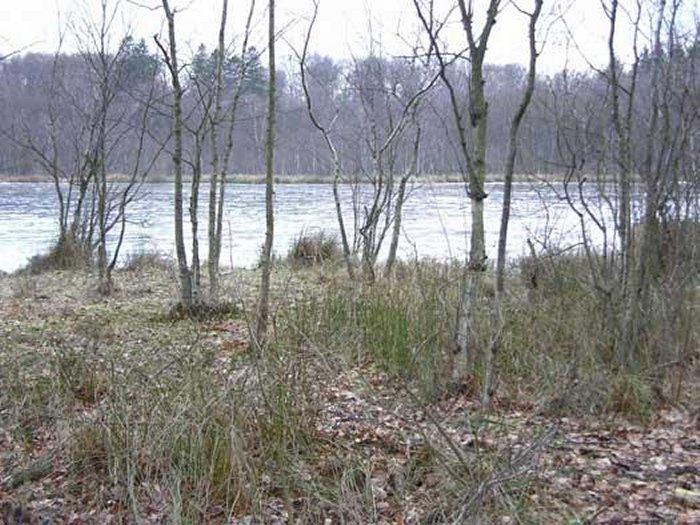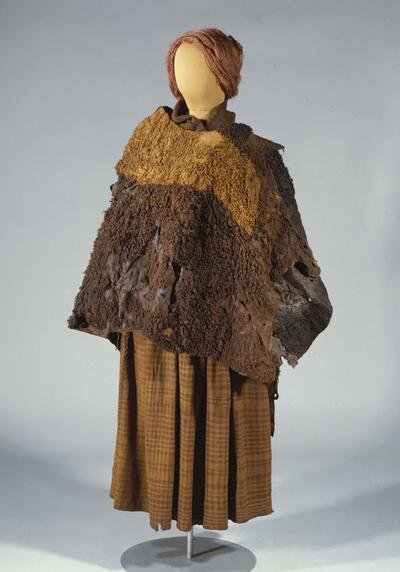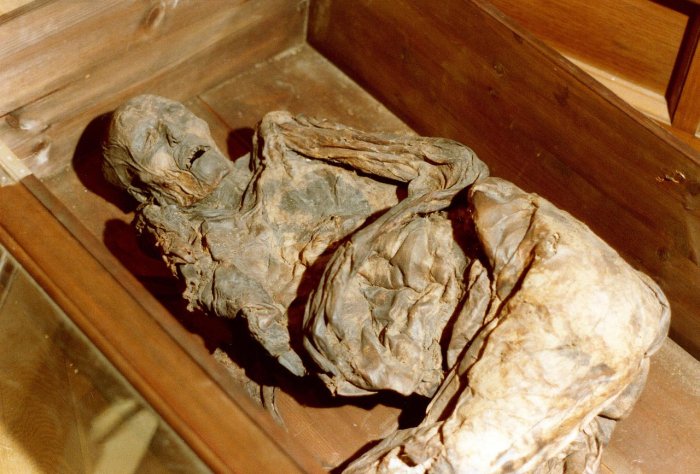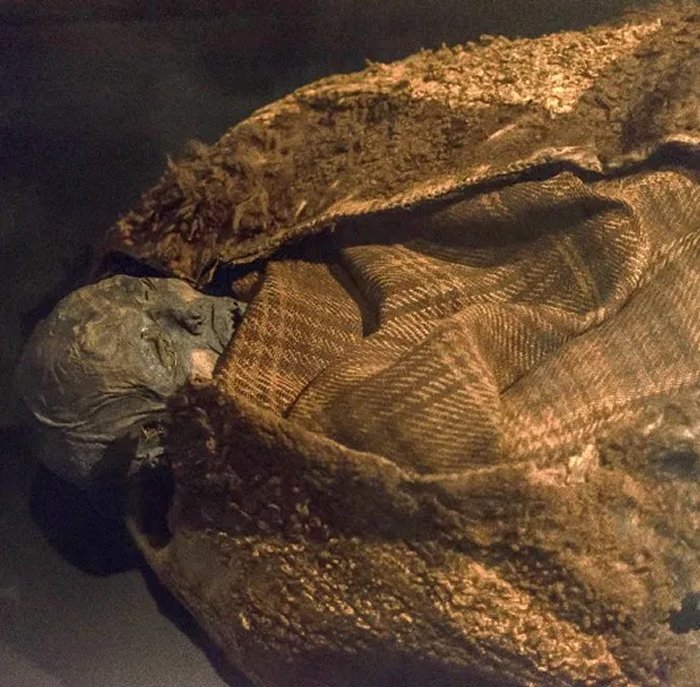Unsolved Mystery Of The Huldremose Woman: One Of The Best Preserved Bog Bodies Ever Found
Ellen Lloyd - AncientPages.com - In 1879, the body of a woman was found by workers digging peat turfs at Huldremose, Denmark.
Examination of the body revealed the woman died a violent death 2,000 years ago. She became known as the Huldremose woman and is today considered one of the best-preserved bog bodies ever discovered.
How her life came to an end remains an unsolved ancient mystery.
The woman found in a bog in Djursland died more than 2000 years ago. Image credit: National Museum of Denmark
The Huldremose woman was about 40 years old when she died. Today, it might sound as if she died at a young age, but back then, she was considered an old woman.
We do not know the exact circumstances surrounding the death of the woman from Huldremose, and why she was killed is unknown, but most likely, she was placed in the bog as a sacrifice.
How exactly she died has been debated. First, it was believed that the poor woman received a violent cut to the right upper arm and died as a result of blood loss. Later examinations have not confirmed this theory, and it is also possible that the injury occurred much later, perhaps during peat-digging in the bog. While the woman was alive, she broke her right leg, but this break healed again before she died.
Textile find from Huldremose. Image credit: National Museum of Denmark
Like most of the bog bodies found in Denmark, the woman from Huldremose was fully clothed. She wore a skirt of wool, a scarf, and a skin cape.
Bog body of the Huldremose woman. Image credit: Sven Rosborn
Her skirt was tied at the waist with a thin leather strap inserted into a woven waistband. The scarf was wrapped around the woman’s neck and fastened under her left arm with a pin made from a bird bone. The cape had been used a great deal and had 22 patches sewn on. The long period in the water of the bog has turned the clothes brown. Color analysis has shown that the skirt was originally blue, and the scarf was red.
The Huldremose Woman wrapped in her clothing. By Bradley Rentz — Own work, CC BY-SA 4.0.
She also had a ring on her finger, amulets in one of her skin capes, and two amber beads around her neck. The fact that the killers did not steal her possessions also suggests the Huldremose woman was sacrificed, but one cannot dismiss the possibility the woman was punished for some crime.
During the Iron Age, bogs were an extremely important resource for people. Turfs were dug there, which were used as building material and fuel. Some bogs contained iron ore, which was a raw material that, after processing, could be made into iron. The bogs, therefore, had a great significance in daily life.
To the Iron Age people, bogs and water regions were considered gateways to another world where gods resided. Making sacrifices to the gods was common, and sacrificing a human being was the greatest gift gods could receive.
Updated on December 16, 2023
Written by Ellen Lloyd – AncientPages.com
Copyright © AncientPages.com All rights reserved. This material may not be published, broadcast, rewritten or redistributed in whole or part without the express written permission of AncientPages.com
Expand for referencesMore From Ancient Pages
-
 How Did Climate Change Impact European Ice Age Humans?
Earth Changes | Aug 21, 2024
How Did Climate Change Impact European Ice Age Humans?
Earth Changes | Aug 21, 2024 -
 Mysterious Ancestor Of All Mammals Identified Through Genome Reconstruction
Archaeology | Sep 30, 2022
Mysterious Ancestor Of All Mammals Identified Through Genome Reconstruction
Archaeology | Sep 30, 2022 -
 Does This Cathedral Offer Evidence Our Calendar Is ‘Missing’ 297 Years?
Featured Stories | May 6, 2022
Does This Cathedral Offer Evidence Our Calendar Is ‘Missing’ 297 Years?
Featured Stories | May 6, 2022 -
 Ancient Fresco Tomb Dated A 1000-Years Ago Was Accidentally Discovered In Northern China
Archaeology | May 5, 2020
Ancient Fresco Tomb Dated A 1000-Years Ago Was Accidentally Discovered In Northern China
Archaeology | May 5, 2020 -
 Unknown History Of Gigantic Obelisks Created With Ancient Lost Technology
Ancient Mysteries | Oct 8, 2017
Unknown History Of Gigantic Obelisks Created With Ancient Lost Technology
Ancient Mysteries | Oct 8, 2017 -
 Young Boy Finds Baffling Artifacts In New Mexico Predating The Anasazi, The ‘Ancient Ones’
Featured Stories | Aug 6, 2024
Young Boy Finds Baffling Artifacts In New Mexico Predating The Anasazi, The ‘Ancient Ones’
Featured Stories | Aug 6, 2024 -
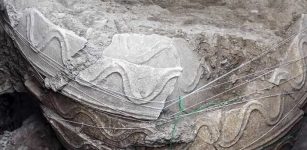 Bizarre Parthian Tomb Sheds Light On Ancient Life In Isfahan, Central Iran
Archaeology | Jun 25, 2020
Bizarre Parthian Tomb Sheds Light On Ancient Life In Isfahan, Central Iran
Archaeology | Jun 25, 2020 -
 51,000-Year-Old Bone Carving Shows Neanderthals Were Artistic Long Before Humans Arrived
Archaeology | Jul 6, 2021
51,000-Year-Old Bone Carving Shows Neanderthals Were Artistic Long Before Humans Arrived
Archaeology | Jul 6, 2021 -
 On This Day In History: British Fleet Attacked The Spanish ‘Invincible Armada’ – On July 21, 1588
News | Jul 21, 2016
On This Day In History: British Fleet Attacked The Spanish ‘Invincible Armada’ – On July 21, 1588
News | Jul 21, 2016 -
 How Is DNA Preserved In Archaeological Sediments For Thousands Of Years
Archaeology | Jan 3, 2022
How Is DNA Preserved In Archaeological Sediments For Thousands Of Years
Archaeology | Jan 3, 2022 -
 A 4.4 Million-Year-Old Hand Of ‘Ardi’ Has Some Clues On Humans’ Upright Walking
Fossils | Feb 25, 2021
A 4.4 Million-Year-Old Hand Of ‘Ardi’ Has Some Clues On Humans’ Upright Walking
Fossils | Feb 25, 2021 -
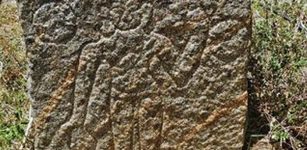 500-Year-Old Vaishnava Saint Sculptures Discovered
Archaeology | Oct 15, 2015
500-Year-Old Vaishnava Saint Sculptures Discovered
Archaeology | Oct 15, 2015 -
 Jörmungandr – Hideous Poison-Spewing Midgard Serpent Was One Of Loki’s Children
Featured Stories | Mar 31, 2018
Jörmungandr – Hideous Poison-Spewing Midgard Serpent Was One Of Loki’s Children
Featured Stories | Mar 31, 2018 -
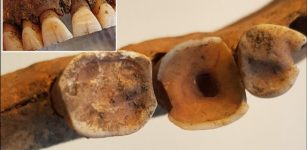 Viking Dentistry Was Surprisingly Advanced And Not Unlike Today’s Treatments
Archaeology | Dec 14, 2023
Viking Dentistry Was Surprisingly Advanced And Not Unlike Today’s Treatments
Archaeology | Dec 14, 2023 -
 Nalanda – One Of The Most Praised Learning Centers And Masterpiece Of Ancient World
Featured Stories | Aug 24, 2015
Nalanda – One Of The Most Praised Learning Centers And Masterpiece Of Ancient World
Featured Stories | Aug 24, 2015 -
 Ryujin: Benevolent And Righteous Dragon-King And Sea God In Japanese Legends
Featured Stories | Jun 10, 2024
Ryujin: Benevolent And Righteous Dragon-King And Sea God In Japanese Legends
Featured Stories | Jun 10, 2024 -
 One Of The Oldest Manuscripts Fragments Of The Famous Merlin Legend Discovered
Archaeology | Sep 2, 2021
One Of The Oldest Manuscripts Fragments Of The Famous Merlin Legend Discovered
Archaeology | Sep 2, 2021 -
 Gods’ Creation Of Five Different Human Races – Ages Of Man On The Earth And The End Of The World
Featured Stories | Jan 26, 2018
Gods’ Creation Of Five Different Human Races – Ages Of Man On The Earth And The End Of The World
Featured Stories | Jan 26, 2018 -
 Why Was The Spartan Army So Successful?
Ancient History Facts | Apr 15, 2022
Why Was The Spartan Army So Successful?
Ancient History Facts | Apr 15, 2022 -
 A Unique Native American Map Everyone Should See
Featured Stories | May 21, 2021
A Unique Native American Map Everyone Should See
Featured Stories | May 21, 2021

